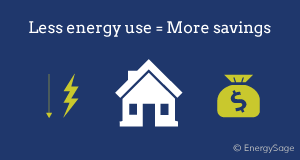A LED is a sort of diode that transforms electrical energy into light. For those that don’t have the foggiest idea, a diode is an electrical part that mainly works in a single bearing. Essentially, a LED is an electrical part that emanates light when electricity moves through in one heading, from the Anode (positive side) to the Cathode (negative side). LED is an abbreviation meaning ‘Light Transmitting Diode’. Fundamentally, LEDs resemble small light bulbs, they simply require significantly less power- Power to Choose to light up and are substantially more effective in creating high-light results.
LED Types
Overall terms, we convey two unique kinds of LEDs:
- 5mm Through-Opening
- Surface Mount.
5mm LED
5mm LEDs are diodes inside a 5mm measurement focal point with two dainty metal legs on the base. These 5mm LEDs are used in applications where a lower measure of light is required. All our 5mm LEDs are from top makers and are accessible in various tones, powers, and light examples. Through-opening LEDs are perfect for little flashlight applications, signage, and anything where you are involving a breadboard as they can be utilized effectively with their leads. Look at our manual for setting up 5mm LEDs for more data on these small light sources.
Surface Mount LEDs (SMD)

Surface Mount LEDs are diodes that can be put on a substrate with a silicon vault over the diode to safeguard it. High-power Surface Mount LEDs from industry pioneers. Both are magnificent as we would see them, to that end we convey them all things considered. Some favor one over the other however that accompanies insight and knowing what to search for. Cree will in general have higher-recorded Lumen yields and is a market chief in the Powerful LED area. Luxeon, then again, has brilliant tones and warm control.
High Power LEDs come as exposed producers and are mounted to a Metal Center Printed Circuit Board (MCPCB). The sheets are covered and have conductive tracks for simple circuit associations.
Power LEDs
The light result from power LEDs is most elevated when they are new, yet it declines bit by bit after some time. It is normal to consider a long period of power LEDs as the functioning time expected to carry the LED to its 70% light result (called L70).
There are a few factors that can impact LED lifetime. Some of them are:
- compound make-up of semiconductor and optical framework
- construction of led bite the dust
- execution of phosphor transformation
- the mechanical construction of the gadget
- materials utilized
- gadget’s a warm exhibition
- consistency and nature of the LED-producing process.
The blend of such factors can bring about tremendous contrasts in LED lifetime. Run-of-the-mill lifetimes are from 30,000 hours to 100,000 hours, so a genuine trial of LEDs for such significant time frames isn’t feasible for producers, it would require long periods of testing.
In 2008 the Enlightening Designing Society of North America (IESNA) characterized a norm to quantify the decrease of light result from LEDs in a brief time frame (IESNA LM-80) and a numerical model to gauge the normal lifetime from the deliberate information (IESNA TM-21).
With LM-80 the light result is observed for something like 6000hrs at most extreme timespans, and the action is rehashed at three unique temperatures. The gathered information is controlled with TM-21 models to create the lifetime extrapolation that can be introduced as a plot.

